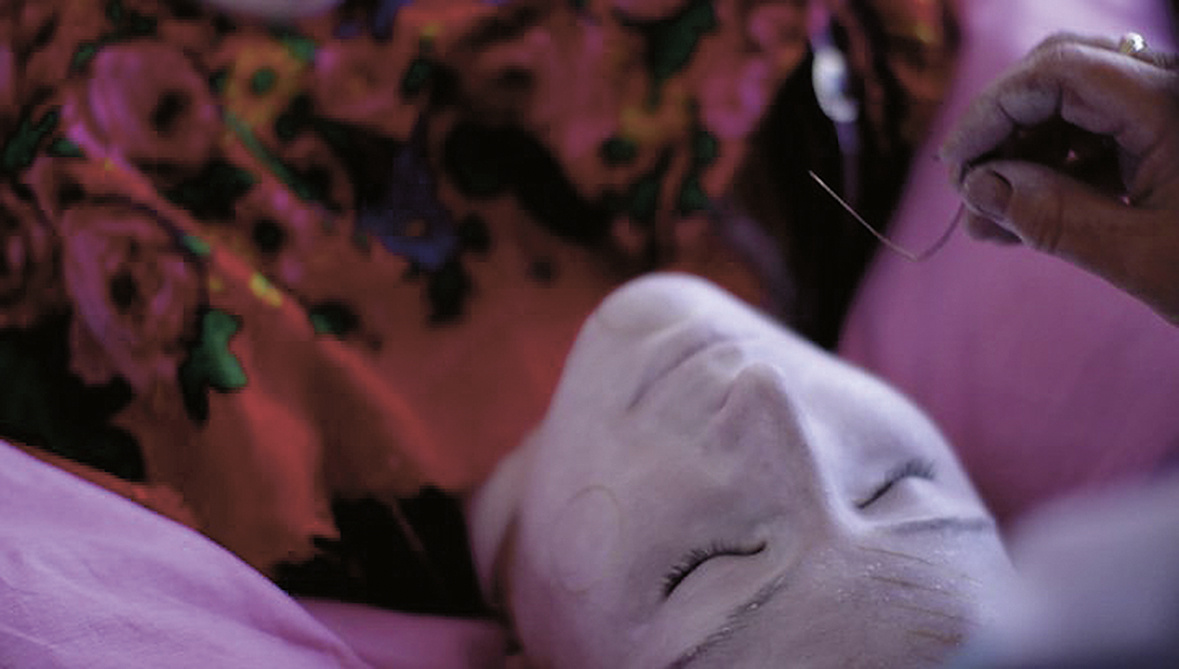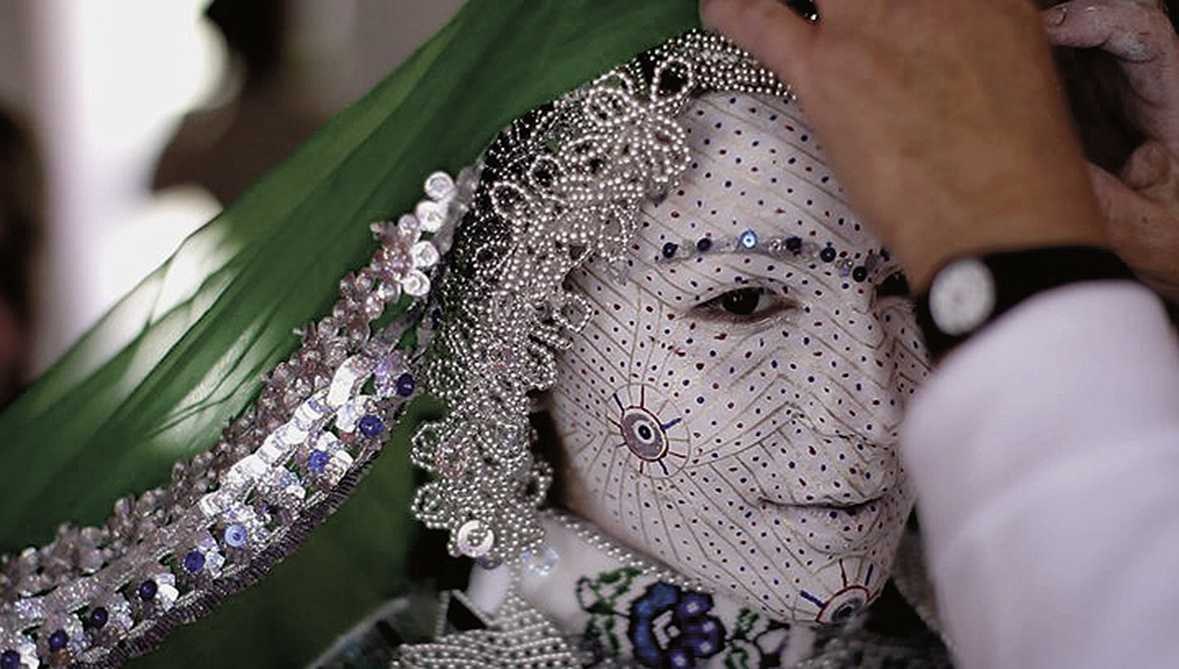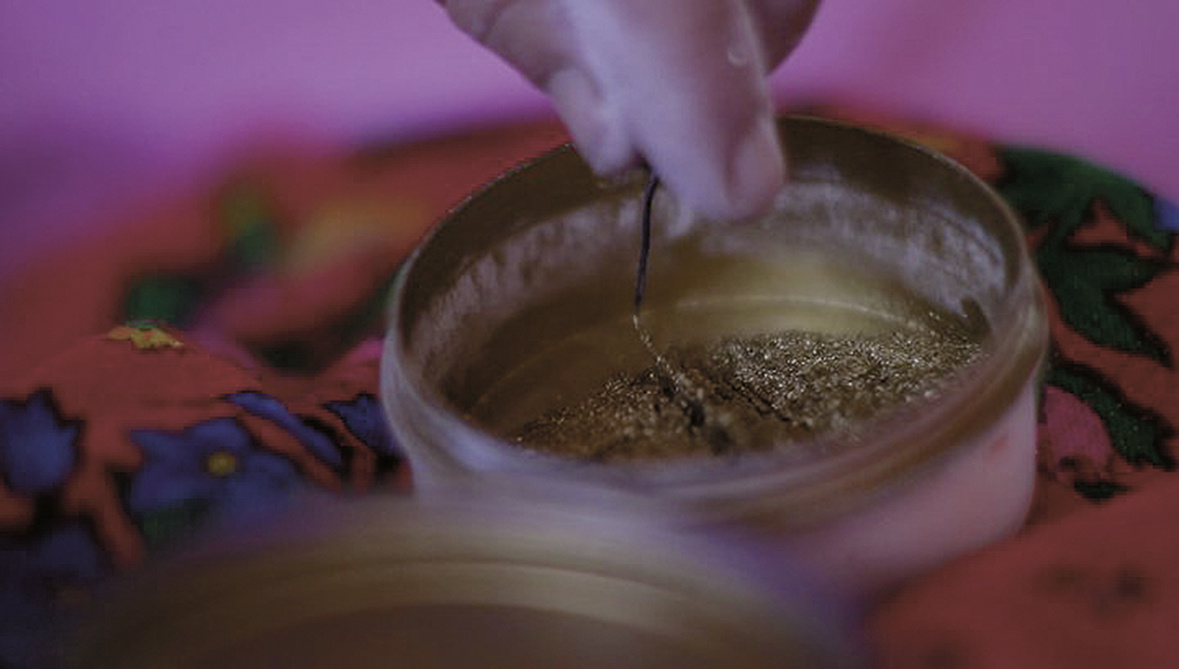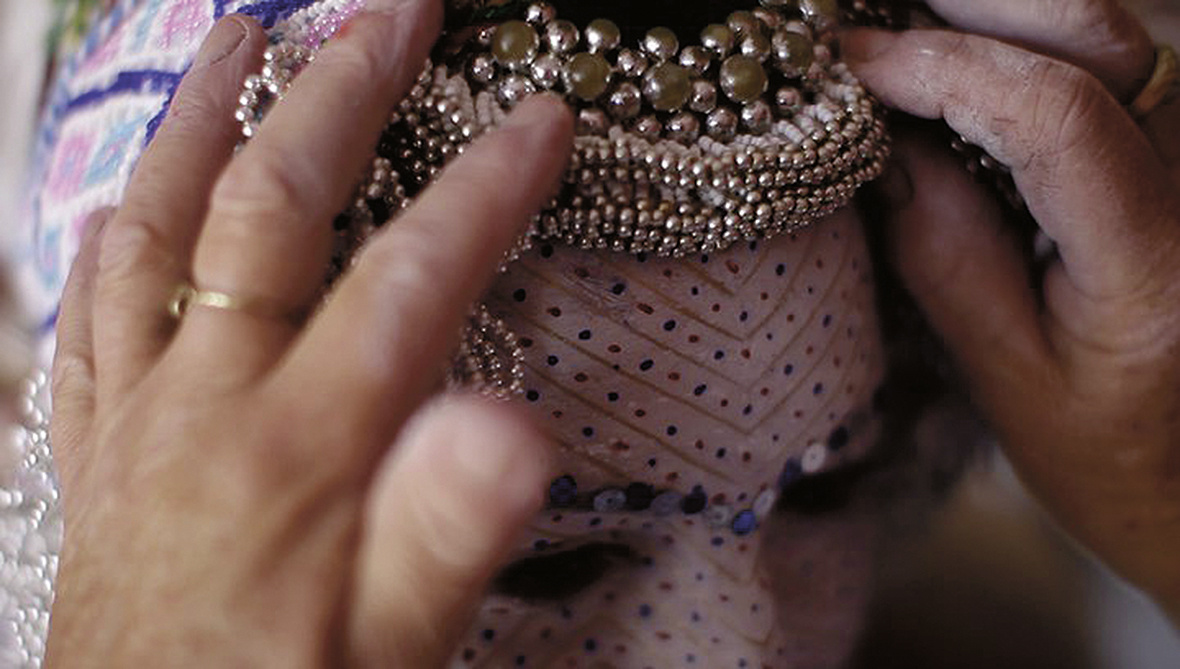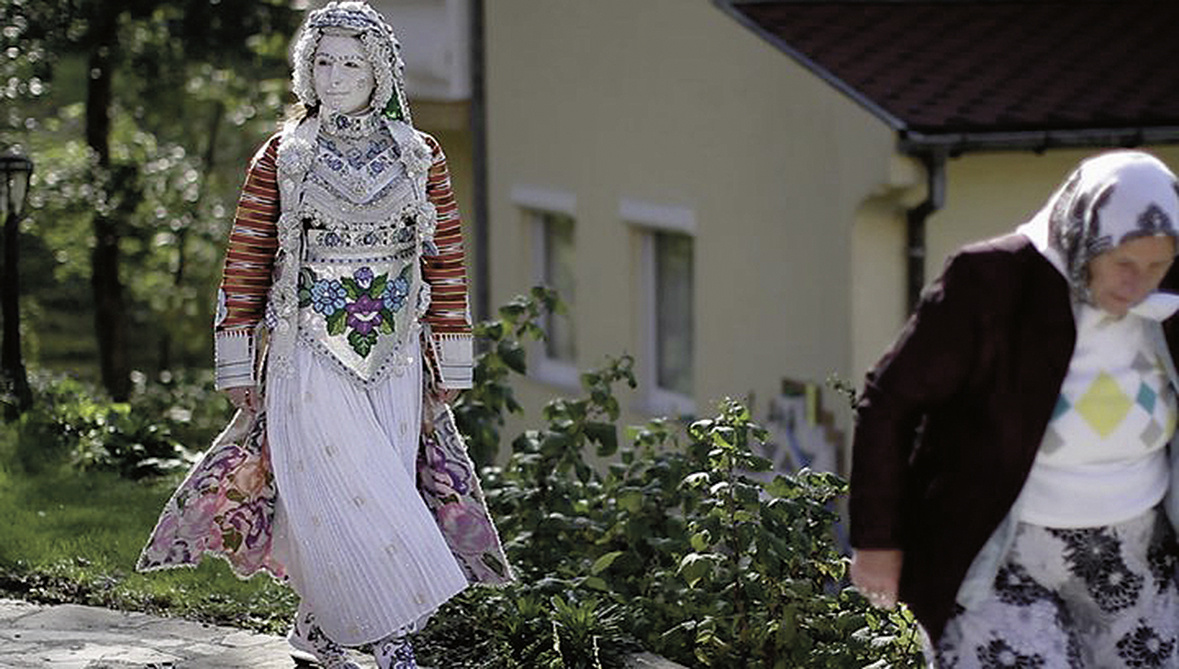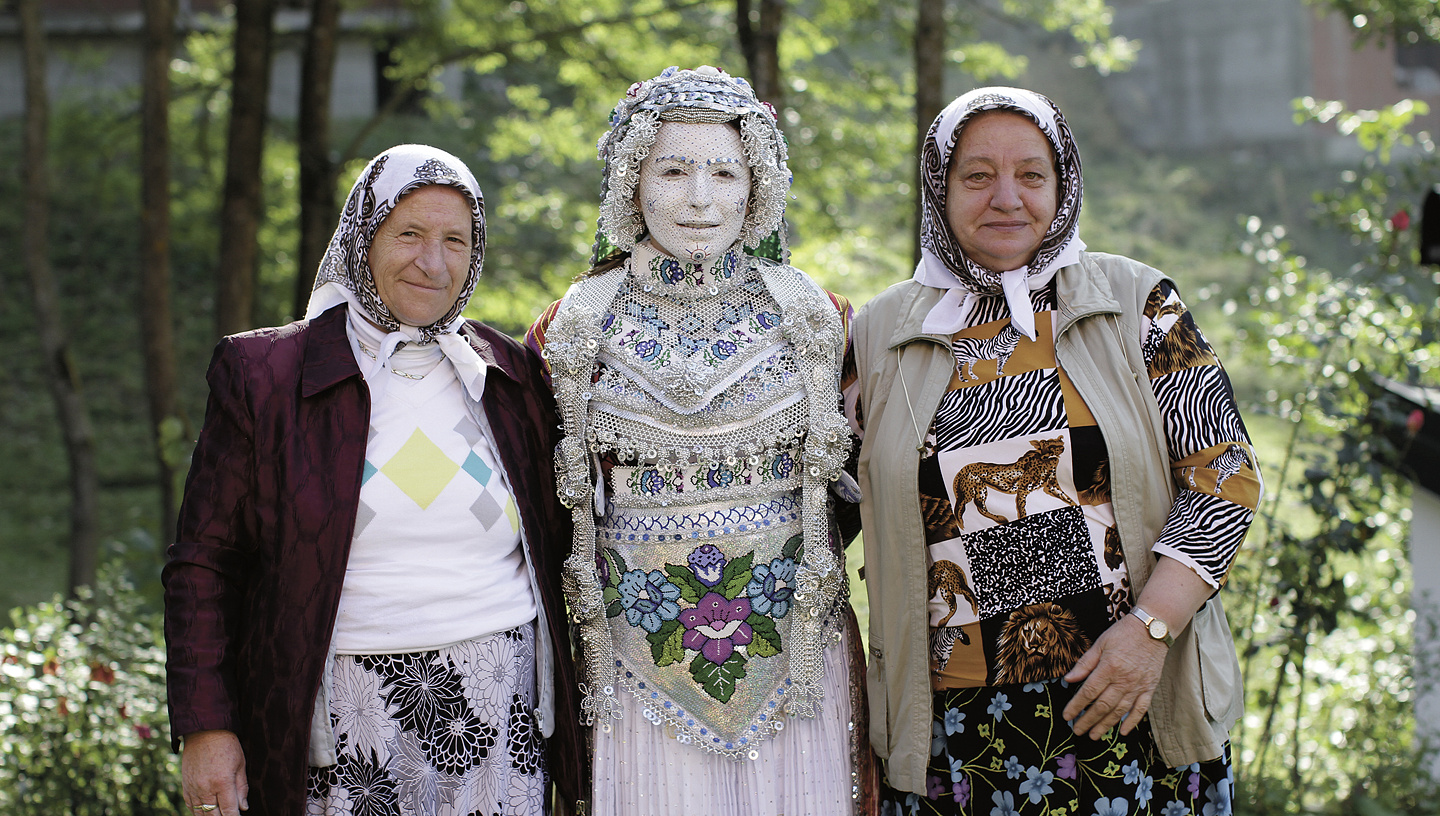Nusja Jonë
The Goran people of Kosovo live in Lubinje, a remote village at the foot of the Sharr Mountains. They have a tradition of dressing and making up the bride on her wedding day, covering the whole body in pale decoration. Performed to ward off the evil eye and wish health and happiness, the ritual is more than a thousand years old. Yet knowledge of the practice is nearly lost.
Stumbling across an image in an old National Geographic of a Goran bride’s face, artists Yll Çitaku and Nita Deda took note. Some years later, on a day when they were visiting the Lubinje area—to film a wedding, in fact—they sought out Aziza Shefiragiç, the woman who had painted the markings on the bride’s face in the magazine photograph. Shefiragiç is one of the last remaining women to know this ritual, which was once practiced as a means of leveling all brides in the village, all made beautiful.
Shefiragiç agreed to perform the ritual on Nita Deda herself. The painting along with the dressing of handmade garments and accoutrements took an entire day; other local women also came by to observe. “The experience changes the way one looks,” Nita says. “It was a moment of divinity, like having a whole cosmos painted on your face.” At the day’s end, Nita drove back to the city of Prizren, still entirely made up.
Yll and Nita’s film aims to preserve this special act of cultural heritage and has subsequently brought attention to the ritual. As Nita remarks, “This face, like the medium of film, projects an image of another state of being and acts as a document,” offering the collective future a possible opening to our sacred pasts.
—Laura Preston
